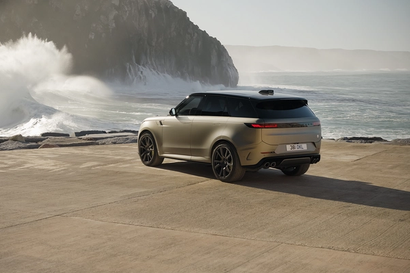Rolling hills, sand, potholes and whisky – plenty of whisky. That’s the real story behind the Land Rover; the national treasure that’s carried everyone from farmers to film stars, and even Her Majesty, for just short of 70 years. Since the news trickled out of Land Rover HQ that the Defender order book would be closing in 2015, there’s been epic tales, longwinded obituaries and even tears from gentlemen with oil-stained skin. But don’t reach for the hanky just yet, gents, there’s a deeper story to be told here. So I travelled to Islay, a remote island off the west coast of Scotland, to unearth the true origins of the bug-eyed brute, and ended up with a wee dram more than I’d bargained for.
The alarm strikes at crazy o’clock. It’s a bright but bleary-eyed morning in Glasgow as I board the small island hopper to Islay airport. It’s midsummer yet there’s a chill in the air – the kind only found in Scotland’s Highlands and Islands. Landing with a bang 40 minutes later and civilisation is in short supply – there’s just acres of beautiful rolling wilderness. I catch a glimpse of my four-wheeled steed through the airport fence. With its flat, mid-grey painted aluminium bodywork and taut khaki canvas hood, it’s a delicate but hardy beast. Everything about it seems to exemplify post-war Britain – a time when ingenuity was defined by necessity and function. A satisfying but simple clunk of the handle and the door is open. I’m sitting behind the wheel of a Series II Land Rover, formally the pride and joy of Spencer Wilks, the managing director of Rover cars in 1947 and co-creator, alongside his engineer brother, Maurice, of the original concept. What better mode of transport could there be to trace the Land Rover’s origins, I think to myself while getting a little misty eyed.
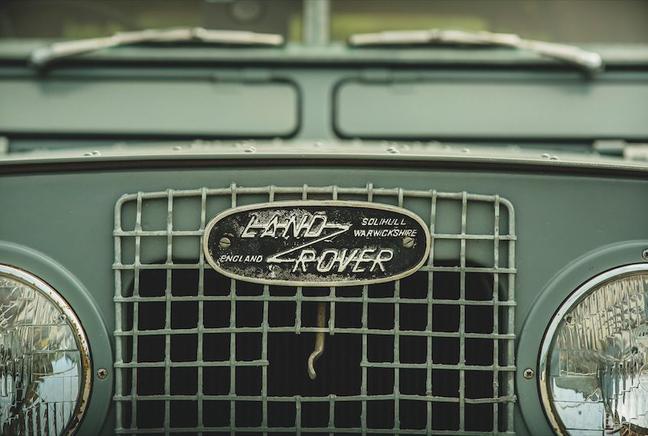
I spoke too soon. Approaching a junction at a fraction over 40mph, I step on the brake pedal, in good time, just as any driver would. There’s nothing, absolutely nothing, not even a flinch from my near pensioner-aged companion. Thankfully, coming across another vehicle is a rarity on Islay and I’m back on my way after coming to a rest on a strategically placed bank. Be warned gents, as handsome as classic cars may appear on the outside, there’s no miracle cure for brake technology developed before The Beatles even existed.
But every old friend has their quirks and though this one may do its best to claim your life, it’s onwards across Islay, to the beach, in search of the ingredients that made this ‘go anywhere’ brute such a lovable icon. Passing Highland cattle, meadows and quaint seaside villages on my way, the road starts to thin considerably, giving way to a muddy and rutted track. The perfect time to test the off-road characteristics that Land Rover has proudly championed since the car was conceived as an alternative to the wartime Willys Jeep. Bump, crash, bang goes my Series II, but all is well in the cabin and the 2.25-litre petrol engine ticks over more smoothly than any modern diesel equivalent. The ruts get larger and the nose of my trusty Land Rover bobs high and low, like the bow of a boat during a heavy storm.
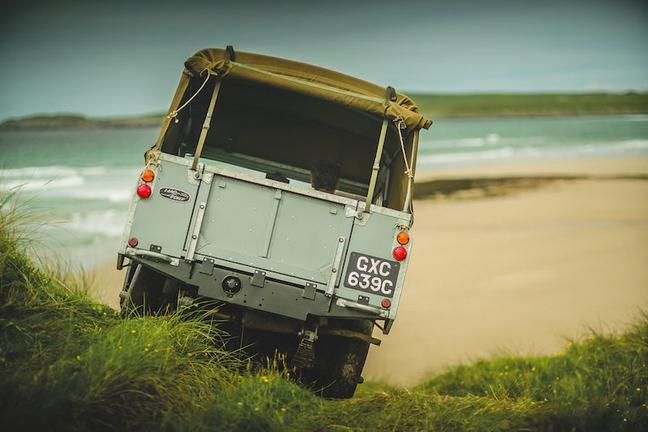
I see my target in the distance, parked up on the hard sand, just above the tide line. I have a meeting with another very important Land Rover, but a little more fresh-faced than the one I’m currently wrestling down a near vertical bank. It’s the 2015 Defender Heritage Edition: one of three special edition models – the other two being the Adventure and Autobiography – that celebrate the Land Rover’s history and mark the end of Defender production. Parked side by side, it’s easy to tell both are descended from the same bloodline. Sporting the same accidentally iconic outline, formed by functionality. But the meeting on the beach of these two great machines bears more significance than may first appear. This was the canvas on which Spencer and Maurice Wilks first penned the Land Rover’s outline, a simple drawing in the sand, while on holiday in Anglesey 68 years ago. From there, the legend was born, cobbled together from aluminium because steel was in short supply in post-war Britain, and painted green with surplus military aircraft paint.
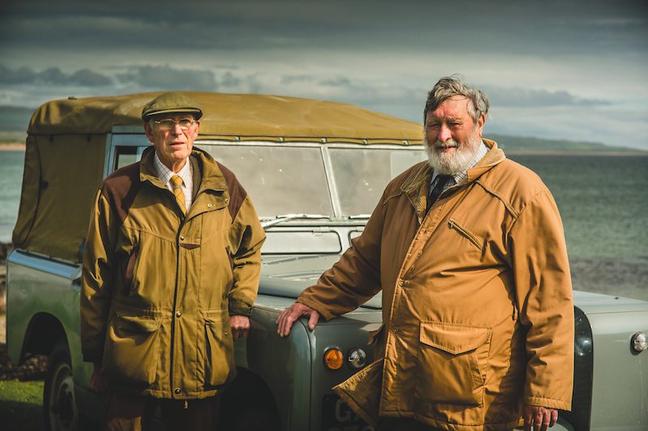
Right, that’s enough of the nostalgia, gents, I’m welling up again. Let’s head back to the future and jump into the Heritage Edition. I’m driving to my penultimate destination and one that’s a little more warming to say the least. As I navigate the sheep-filled lanes in this £28,000 homage to nearly 70 years of design, it’s clear the Heritage Edition was not intended to reinvent the Defender. With retro touches, such as the old-style aluminium badges on the front and back, Grasmere Green colour scheme and HUE 166 tags (the number given to the very first pre-production Series I), the Heritage is a warm, limited edition tribute to Land Rover’s pedigree. The Adventure and Autobiography models, on the other hand, celebrate the Land Rover brand’s expedition and premium credentials.
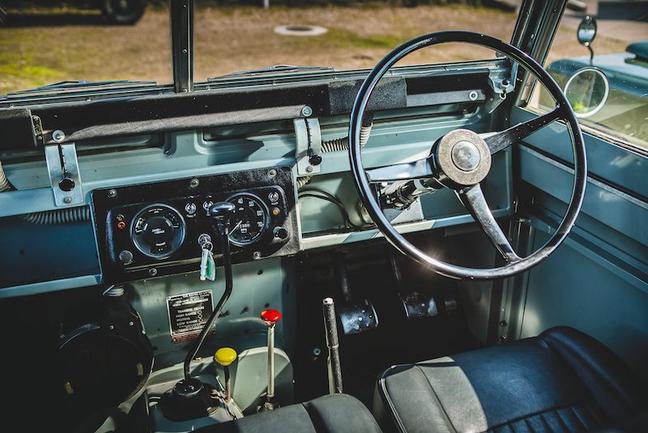
Once fully acquainted with the Heritage Edition, I arrive at the Kilchoman distillery: Islay’s smallest yet, as far as this story is concerned, most significant whisky producer. Bear with me, there’s a tangible, albeit tasty, link between whisky production and Land Rovers. Spencer Wilks’ family also happen to be behind the Kilchoman distillery after he bought the Laggan estate on the island in the 1930s. As a result, he spent much of his time driving around the island and family estate in a Rover Ten with modified suspension. Over time the trusty Rover became known to the family and Ian Fraser, Wilks’ headkeeper on the estate, as the Land Rover, and from that unsuspecting moment in the late 1940s, a legendary name was born.
After this stroke of genius, the wilds of Islay became the established testing ground for all pre-production Land Rover models until shortly before Wilks’ death in 1971, with each one being handed over to Ian Fraser and his son Duncan for rough, real-life testing on the estate. “I was driving Land Rovers before I was old enough to reach the pedals,” says Duncan, “not that the police could ever catch me!” he adds, patting the bonnet of the immaculate Series II.
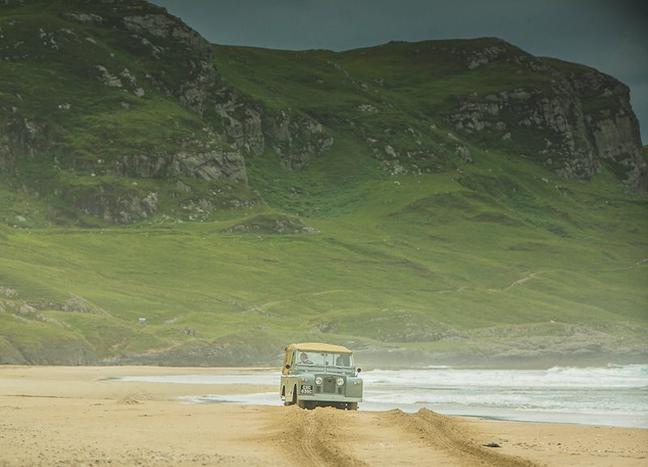
After a whistle stop tour of the laboratory like distillery, I’m trundling along the roads once again in the Series II. It’s almost the end of my time on Islay but there’s one all-important ingredient I’m missing: the fabric of the Wilks’ family estate. Here, while standing on the shoreline with Nick Wilks, Spencer’s son, I’m told tales of the Land Rover’s resilience over decades of serving the familiy’s needs. These cars weren’t just a tool to make tasks around the estate easier, they were an extension of the family and a necessity for life in one of Britain’s most isolated outposts. As a result, the Defenders we drive today carry some of the family DNA within them. The lineage of this global phenomenon has, in part, developed through the experiences of an everyday family, just like the people Spencer and Maurice Wilks created the car for in the first place. Its brutally simple design is pure genius and it’s not hard to see why the blueprint has served Britain for longer than our current Queen.
It’s been a short but sweet visit to Islay. I’ve sampled the unforgiving landscape that forged the Land Rover’s go anywhere ability, stood on the canvas used to imagine its unmistakable shape, tasted the rich, malty flavours of the latest Wilks family enterprise, and I’ve navigated the same roads, paths and peaks that Wilks and his keepers did for decades. Land Rovers may have been built in the Midlands for the best part of seven decades but it’s here, on a rutted driveway on Islay – in its true home – that we leave this automotive stalwart to rest after 70 years of hard graft. Well done, old friend, and welcome home.

Become a Gentleman’s Journal Member?
Like the Gentleman’s Journal? Why not join the Clubhouse, a special kind of private club where members receive offers and experiences from hand-picked, premium brands. You will also receive invites to exclusive events, the quarterly print magazine delivered directly to your door and your own membership card.


